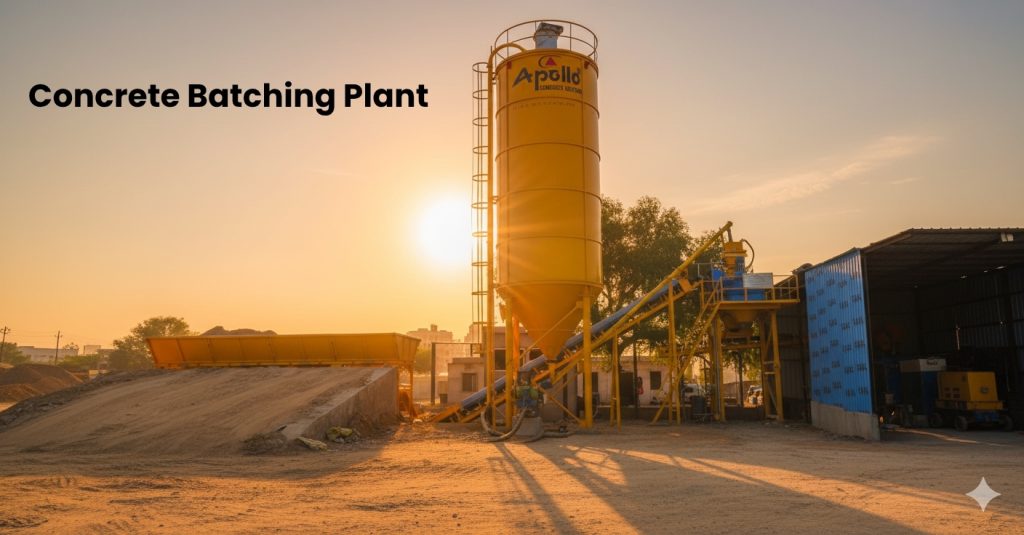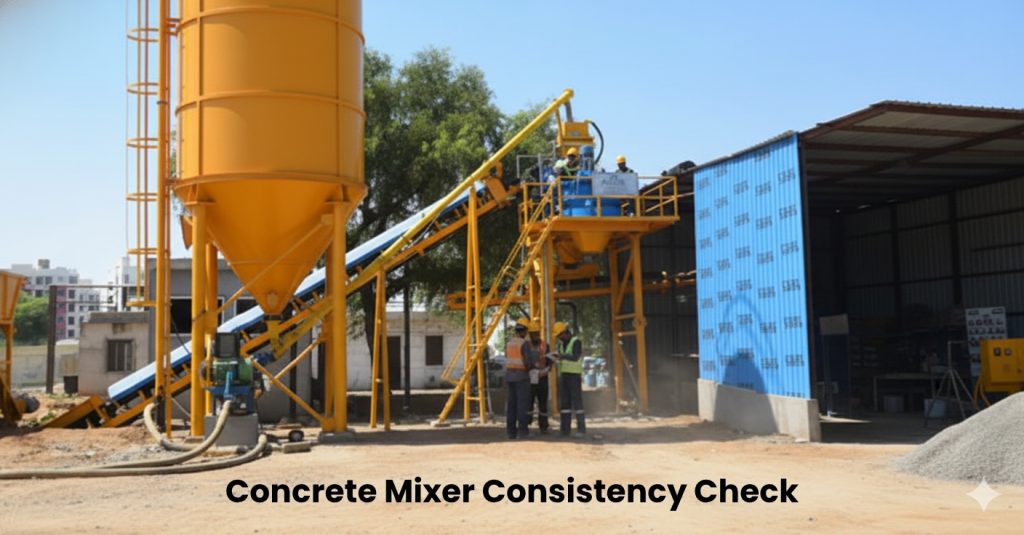Table of Contents
Concrete batching plants are essential in the construction industry for producing high-quality concrete at a large scale. Accurate calibration of the batching plant is crucial to ensure that the correct proportions of materials are mixed, reducing waste and ensuring the consistency of the final product. This step-by-step guide will walk you through the process of calibrating a concrete batching plant, focusing on adjusting for accuracy and performance to meet design specifications.
Objective of the Article
The objective of this article is to:
- Guide engineers and plant operators through the process of calibrating a concrete batching plant to ensure precise mixing ratios and consistency.
- Provide a step-by-step procedure for calibrating both the aggregate batching system, cement batching system, and water dosing components of the plant.
- Explain the importance of accurate calibration in achieving optimal concrete quality, minimizing material waste, and reducing operational costs.
- Offer troubleshooting tips and explain common calibration issues that may arise during the calibration process.
By the end of this article, readers will have the knowledge to perform precise calibration of their batching plant for optimal performance and accuracy.
Concrete Batching Plant: Step-by-Step Accuracy Adjustment Procedure for Calibrating
1. Preparation for Calibration
Before starting the calibration process, ensure that all necessary equipment and tools are available.
Step 1.1: Gather Tools and Equipment
- Weighing scales (calibrated for accuracy)
- Water meter for accurate water dosage
- Stopwatch or timing device
- Sample containers for collecting material samples
- Digital calibration tools or software (if applicable)
Step 1.2: Review Plant Documentation
- Review the concrete batching plant design and specifications.
- Identify the required mix design, including the proportions of cement, aggregate, and water.
Step 1.3: Safety Precautions
- Ensure all safety protocols are in place, including lockout/tagout procedures to prevent accidental startup.
- Wear personal protective equipment (PPE), such as gloves, goggles, and hearing protection.
2. Calibrating the Aggregate Batching System
The aggregate batching system is responsible for delivering the correct amount of aggregates (sand, gravel, etc.) into the mix.
Step 2.1: Verify Aggregate Bins and Weighing Scales
- Ensure the aggregate bins are clean and free of blockages.
- Calibrate the weighing scales used to measure the aggregate output. You can do this by comparing the actual weight of a known quantity of material to the reading on the scale. Adjust if necessary.
Step 2.2: Check Aggregate Delivery System
- Verify that the conveyor belts or screw conveyors used to transport the aggregate to the mixer are operating smoothly.
- Test the flow rate by timing the delivery of a known amount of material to ensure that the delivery rate matches the plant’s design specifications.
Step 2.3: Adjust the Aggregate Dosing
- Run a test batch and check the actual weight of the aggregate being fed into the mixer.
- Adjust the batching gates or other control mechanisms to ensure that the correct quantity of aggregate is delivered.

3. Calibrating the Cement Batching System
The cement batching system must deliver precise amounts of cement to the mixer, as cement is a primary component of concrete.
Step 3.1: Inspect the Cement Weighing System
- Ensure that the cement weigh hopper is free from blockages and is properly calibrated.
- Check the weighing scales and ensure they are correctly calibrated by using a standard weight or reference material.
Step 3.2: Verify Cement Flow Control
- Run a test batch and check the actual weight of cement dispensed into the mixer.
- Adjust the cement flow control mechanism to ensure the correct amount is delivered to the mixer.
Step 3.3: Fine-Tune the Cement Dosing System
- Adjust the control panel to ensure that the cement dosing system is dispensing the correct amount based on the mix design.
- Double-check that the timing and flow rates are in line with the specified values.
4. Calibrating the Water Dosing System
Water is a critical component in concrete mixing, and accurate dosing is essential for achieving the desired concrete consistency.
Step 4.1: Verify Water Flow Meter
- Inspect the water flow meter to ensure it is correctly calibrated and capable of measuring the correct amount of water.
- Check for leaks in the water supply line and fix any that are present.
Step 4.2: Adjust Water Dosing Based on Mix Design
- Use the mix design to calculate the required water-to-cement ratio for the desired concrete consistency.
- Adjust the water dosing system to ensure it dispenses the correct amount of water into the mixer. This may involve calibrating a flow meter or control valve.
Step 4.3: Test Water Flow Rate
- Run a test batch, measure the amount of water being added, and verify that it matches the desired value. Adjust the dosing controls as needed.

5. Calibrating the Mixer and Check for Consistency
Step 5.1: Run a Test Batch
- After calibrating all material components (aggregates, cement, and water), run a test batch of concrete.
- Measure the actual output to ensure it matches the required batch size and proportions outlined in the mix design.
Step 5.2: Verify Mix Quality
- Check the consistency of the concrete, such as slump test, workability, and strength.
- Ensure that the concrete meets the required specifications (e.g., compressive strength, slump).
Step 5.3: Adjust Mixing Time and Speed
- If the mix is too dry or too wet, adjust the mixing time and mixer speed to optimize the final product.
- Ensure that the mixer is working efficiently, without overloading or underloading.
6. Final Calibration Checks
Step 6.1: Recheck All Dosing Components
- Recheck all calibration settings for aggregates, cement, and water. Ensure that each material is dispensed according to the designed batch size and mix proportions.
Step 6.2: Test Over Multiple Batches
- Run several test batches to verify consistency over time. Check that the weights of materials and the properties of the mixed concrete remain consistent.
Step 6.3: Document Calibration Results
- Document the calibration results, noting the final adjustments made to the plant controls and batch sizes. Keep records for future reference and for maintenance purposes.
Testimonials
“If you buy concreat equipment.
Batching plant, self loading transit mixer, automatic block making machine, Paver machine, and pipe making machine, automatic cage welding machine, etc…..
Good service giving Spares and service to”
– Rakesh Patel
Conclusion
Calibrating a concrete batching plant is a crucial process that ensures the quality, efficiency, and consistency of the concrete produced. By following this step-by-step accuracy adjustment procedure, you can ensure your plant is operating at optimal performance, reducing waste and minimizing operational costs. Regular calibration and maintenance are essential for maintaining the reliability of the batch plant concrete system and meeting industry standards.
Table of Contents


